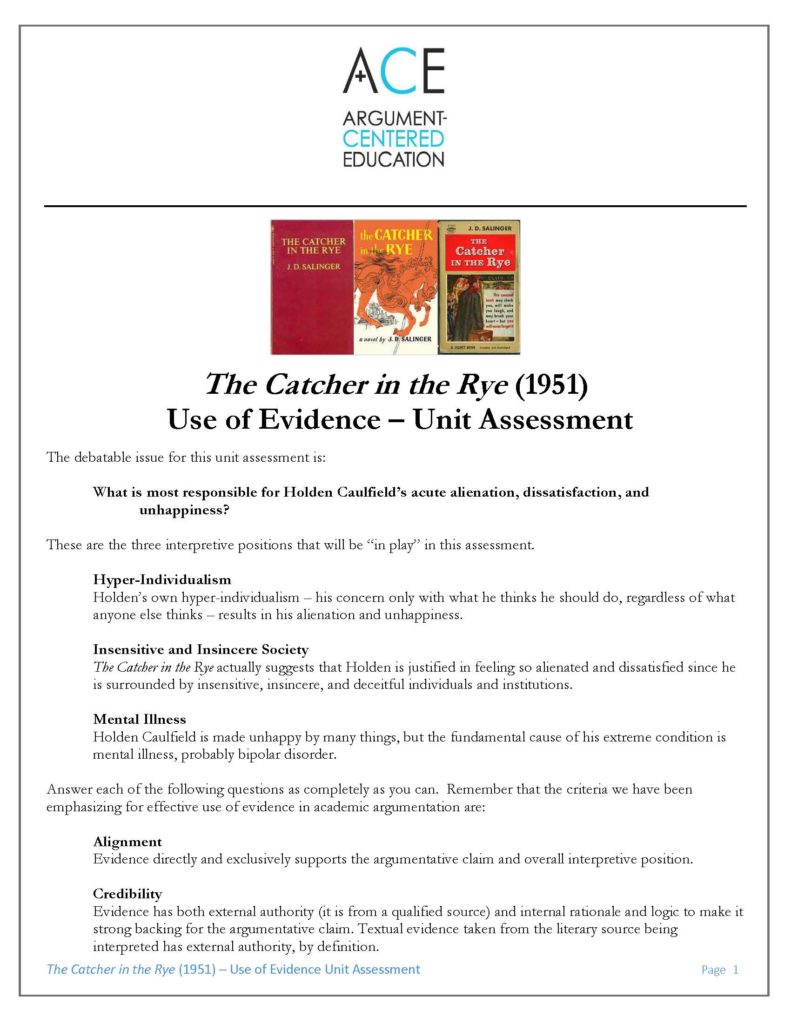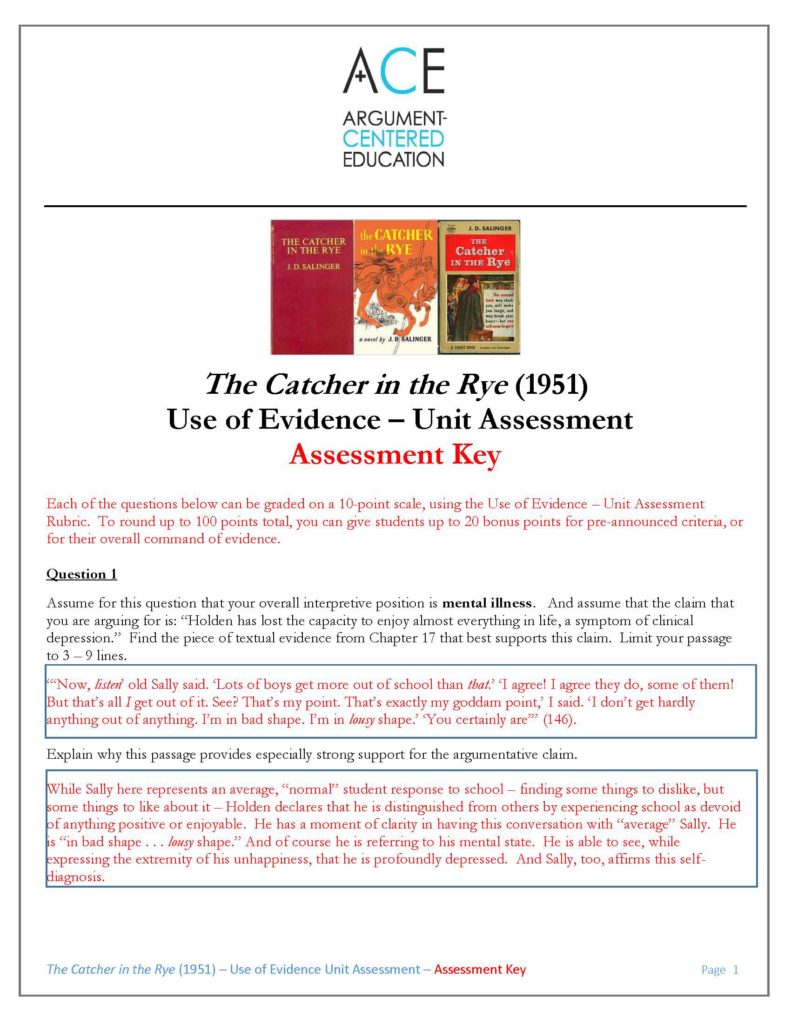
Unit Assessment: The Use of Evidence in Interpreting ‘Catcher in the Rye’
Last month I posted on a project called Argument Stations on The Catcher in the Rye that has students thinking hard about the novel’s voice, particular diction, and characterization as they point in certain interpretive directions in response to a debatable issue. This post, which examines a unit assessment on the use of evidence in understanding and interpreting the novel, is a kind of corollary and culmination.
This Use of Evidence — Unit Assessment uses the same debatable issue as the Argument Stations project.
The debatable issue for this project is:
What is most responsible for Holden Caulfield’s acute alienation, dissatisfaction, and unhappiness?
And of course it uses the same three interpretive positions that students have been studying through the course of the unit.
Hyper-Individualism
Ralph Waldo Emerson, in his famed 1841 essay “Self-Reliance” wrote, “What I must do is all that concerns me, not what the people think. This rule . . . may serve for the whole distinction between greatness and meanness.” Holden seems concerned only with his own responses to the world, not at all with what others think. But Salinger may be warning us that this kind of hyper-individualism leads to madness.
Insensitive and Insincere Society
Many readings of The Catcher in the Rye judge Holden negatively, finding him immature, unstable, erratic, and unreliable as an expression of the novel’s actual thematic intentions. But what if Holden is taken more at face value, as an artistic, sensitive, sincere young man who is easily wounded by a society of conformist, uncaring, and insincere people and institutions?
Mental Illness
Holden ends the novel in a hospital, having been committed apparently by his parents for what would have been called at the time a “mental breakdown.” Whether Holden is suffering from bipolar disorder that may be genetic, or suffering from depression precipitated by his brother Allie’s death or the remoteness and disengagement of his parents, the novel may focus on a character who has a serious mental illness throughout.

The Use of Evidence — Unit Assessment isolates the skills students have been exercising throughout the unit in their use of the text to substantiate their interpretive claims. It is true that isolating the use of evidence as an academic skill is artificial; students have to learn to bring together advanced skills in the use of evidence with other skills in academic argumentation and critical thinking in more “authentic” work product typical in high school and college and in the work place (e.g., essays, papers, reports, presentations, argument-based discussion).
But artificially isolating specific skills in this way can be a valuable pedagogical technique, helping students pare away the complexity of producing full projects and practicing specific constituent skills, and enabling you to determine how much your students know and understand individual skills, how much growth they have experienced, and what precisely they need to learn in order to take the next steps. Isolating individual constituent skills for assessment also complements strategies of instruction that sequence academic argument skills instruction over the course of the year, and even vertically integrate that instruction over several years (9th – 11th grades, or 6th – 8th grades).
It is important to use consistent criteria for evaluating performance with each of the constituent skills of academic argument. For the use of evidence in literary interpretation we like to use three criteria (we add a fourth, factuality, when working with argumentation in the social sciences).
Alignment
Evidence directly and exclusively supports the argumentative claim and overall interpretive position.
Credibility
Evidence has both external authority (it is from a qualified source) and internal rationale and logic to make it strong backing for the argumentative claim. Textual evidence taken from the literary source being interpreted has external authority, by definition.
Sufficiency
Evidence is sufficient both qualitatively and quantitatively to make the argument convincing. When working with a literary source, sufficiency can require that evidence comes from multiple places in the text, rather than one instance.
Using criteria consistently helps de-mystify for students the evaluation of argument, and gives them the language and conceptual frame within which to take responsibility for their own increasing command over and improving performance with the skills.
Questions in this Use of Evidence assessment posit that a writer is taking one of the overall positions, or establishes a particular argumentative claim, or provides an example of the way that a writer evidences a particular argument, and asks the students to supply what is missing, evaluate what is there, identify embedded flaws, or revise and complete the argument.
As with other argument-based resources, thinking through what you expect from students both in their thinking and in their written product is crucial. To do that you should produce an “Answer Key” — in quotes, because these are not literally “the right answers,” but rather they are exemplars in a critical response to each question.

It is also crucial when designing your own Use of Evidence — Unit Assessment for your unit curriculum that you vary the questions widely so that various facets of the skill can be accessed and assessed. We have produced and used with partner schools this universal rubric for grading student work on the Use of Evidence — Unit Assessment.

Contact us if you would like our support in your own or your school’s efforts to adapt the above resources for your specific instructional plans.

